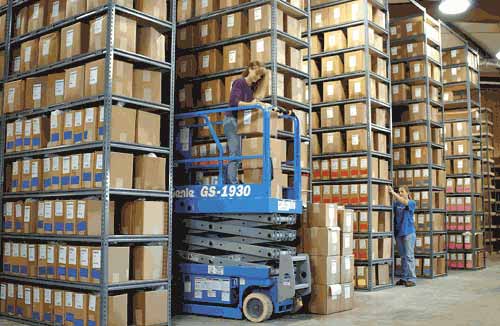Accounting
Report Shows Which U.S. Retailers Are Stuggling to Move Inventory
Despite positive expectations for consumer spending to pick up after the cold and long winter, retail sales in April proved to be relatively flat and disappointing. But for those sounding the alarm that the tepid April numbers may reflect overall ...
May. 27, 2015

Despite positive expectations for consumer spending to pick up after the cold and long winter, retail sales in April proved to be relatively flat and disappointing. But for those sounding the alarm that the tepid April numbers may reflect overall weakness in the retail sector, the revenue and profit margin performance for privately held retailers may soothe some fears about the industry’s overall health.
Privately-held retail companies are growing revenues at an approximate rate of 7 percent and seeing higher net profit margins than they have in years past. “It’s not explosive performance,” said Sageworks analyst James Noe, “but private retailers are currently seeing consistent revenue growth and healthy margins relative to years past.”
What’s more concerning than their sales performance, continued Noe, is that inventory is staying on the shelves a little bit longer than usual for privately held retailers. Retailers have been seeing an average of 93 inventory days, looking at statements filed over the past year. This means that, on average, it takes about 93 days for retailers to turn over their inventory. This is three days longer than it has typically taken retailers- this is compared to a trailing five year average that includes all statements filed in the time frame: 2011-2015. This trailing five year average was chosen by analysts at Sageworks to give a sense of how long it has typically taken U.S. retailers to get rid of inventory in the recent past.
“It’s important to track how long it takes to convert inventory to cash,” said Noe. “When a company is having difficulty moving inventory, it can lead to revenue issues and cash flow problems down the road.”
In order to identify which retail sub-industries were responsible for this jump in overall retail inventory days, analysts at Sageworks constructed a list of U.S. retailer types, ranked by inventory days. As in the table above, the list includes two time periods for each retailer type: first, the average number of inventory days for the twelve month period ended April 30, 2015. Second, the average number of inventory days looking at statements filed in the time period 2011-2015.
At the top of the list is sporting goods and hobby stores; these companies are taking nearly 200 days to convert inventory into sales, on average. “This means that sporting goods and hobby items are sitting on the shelf for more than twice as long as other retail products,” said Noe. While it typically takes these retailers a long time to turn inventory over, they’ve especially struggled over the past year.
Like sporting goods stores, furniture retailers and automotive parts stores also typically take a while to get rid of inventory. However, both of these industries are having more issues than usual turning their inventory into sales.
The full list, created using Sageworks private company database, is outlined on the second page.
Source:
